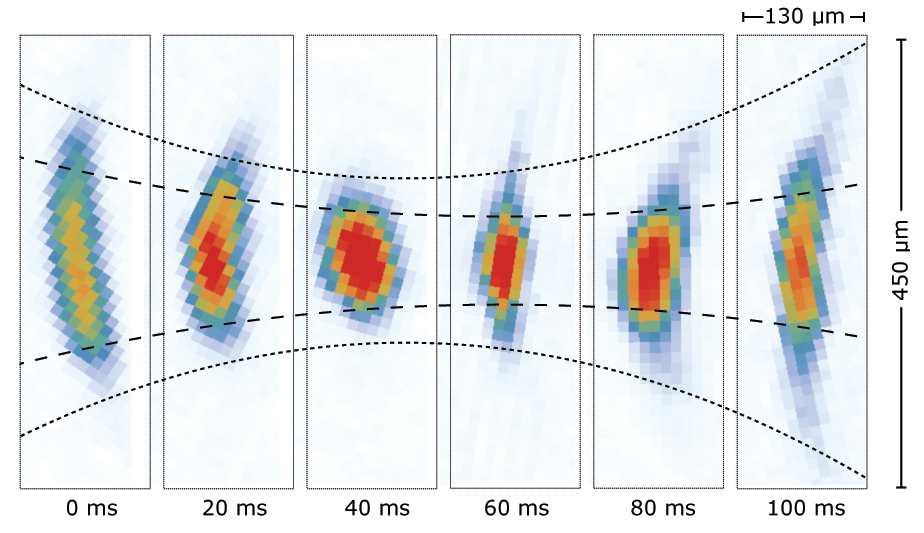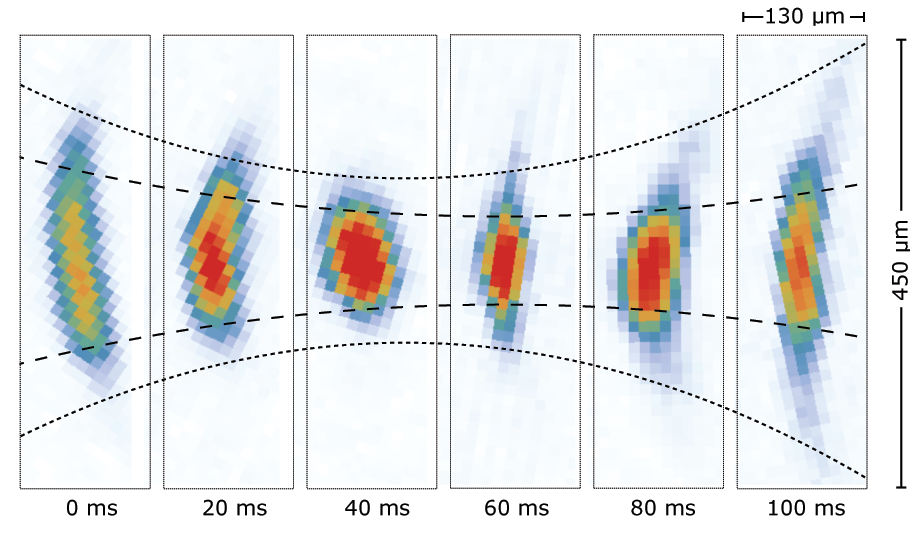How to Focus a Bose-Einstein Condensate in a Waveguide
An ultracold cloud of atoms spreads with time, just as a beam of light spreads in space, but an electromagnetic “lens” can “focus” the cloud and reduce its kinetic energy. The lowest energies yet achieved—in the picokelvin (pK) range—require large facilities that allow the atoms to fall freely for several seconds. Now researchers have demonstrated a lens that works in this regime with atoms in a ring-shaped waveguide less than a millimeter across [1]. Manipulating these “matter waves” in small spaces is essential for exploiting their quantum effects for purposes such as high-precision navigation.
The team, led by Wolf von Klitzing at the Institute for Electronic Structure and Lasers, part of the Foundation for Research and Technology - Hellas in Greece, placed a several-hundred-micrometer-wide Bose-Einstein condensate (BEC) of rubidium atoms into a ring-shaped electromagnetic trap, somewhat like placing a marble in a roulette wheel. To start the “marble” moving, the team tilted the ring toward the atoms and then rotated it about its original vertical axis, so that the lowest point revolved at up to 10 Hz for about 200 ms. Next, they leveled the ring and let the cloud spread freely as it raced around. Finally, the team focused the BEC by again tilting the rotating ring toward the atoms for 17 ms.
The researchers showed that the tilt angle was analogous to the focusing strength of an optical lens. Too large a tilt caused the cloud to briefly shrink and then enlarge, like an overly powerful lens focusing light in front of the intended focal plane. The ideal tilt of about 5° held the cloud at a fixed size for nearly a second and reduced its expansion energy to 800 pK.
–David Ehrenstein
David Ehrenstein is a Senior Editor for Physics Magazine.
References
- S. Pandey et al., “Atomtronic matter-wave lensing,” Phys. Rev. Lett. 126, 170402 (2021).





